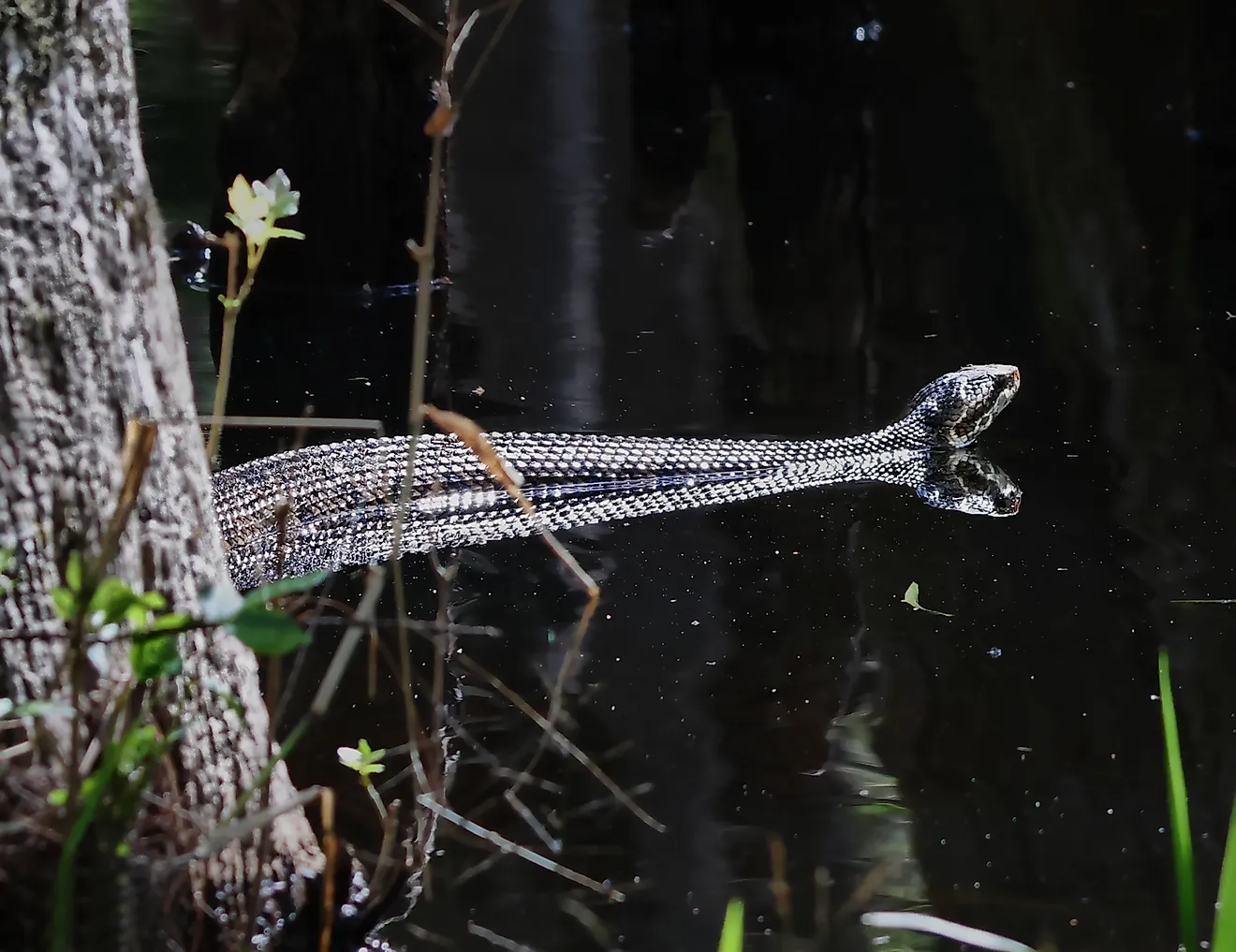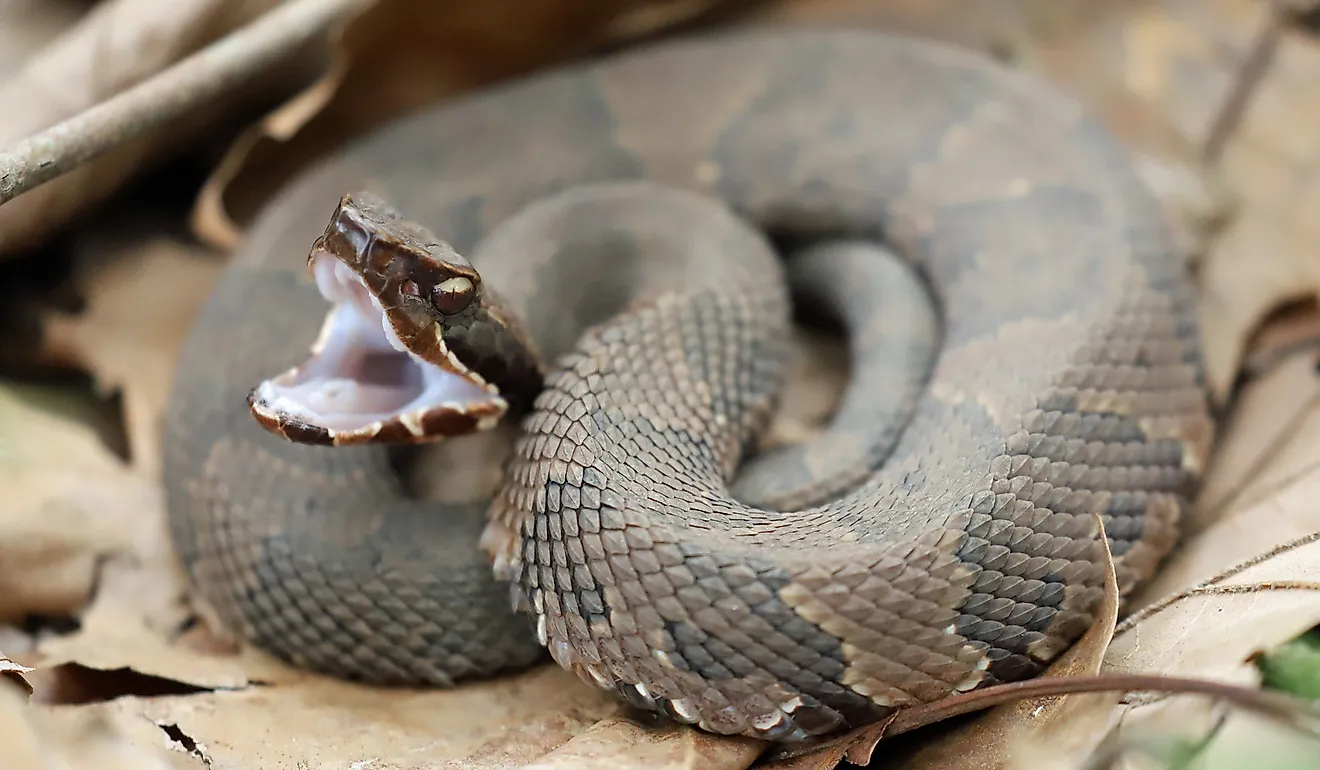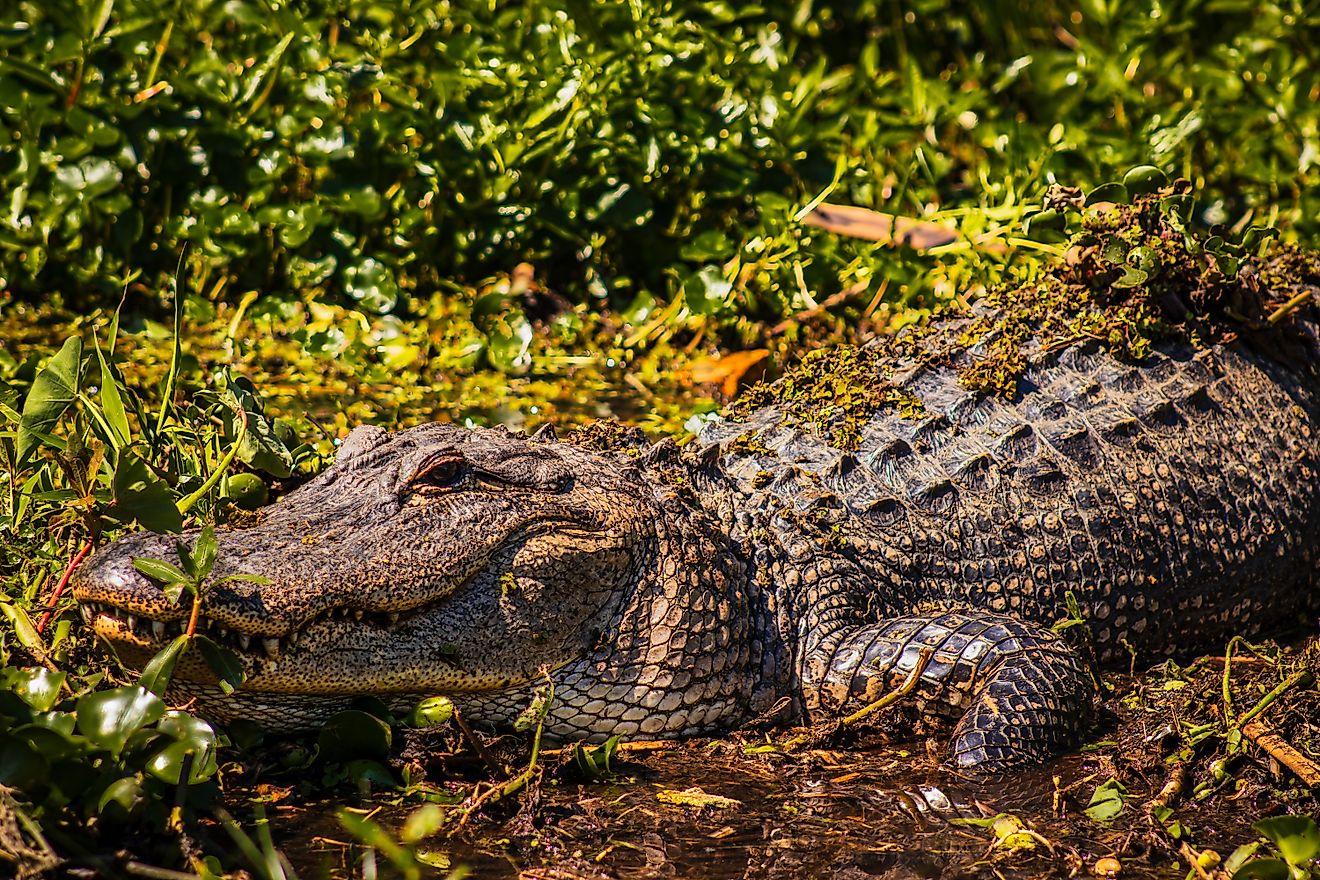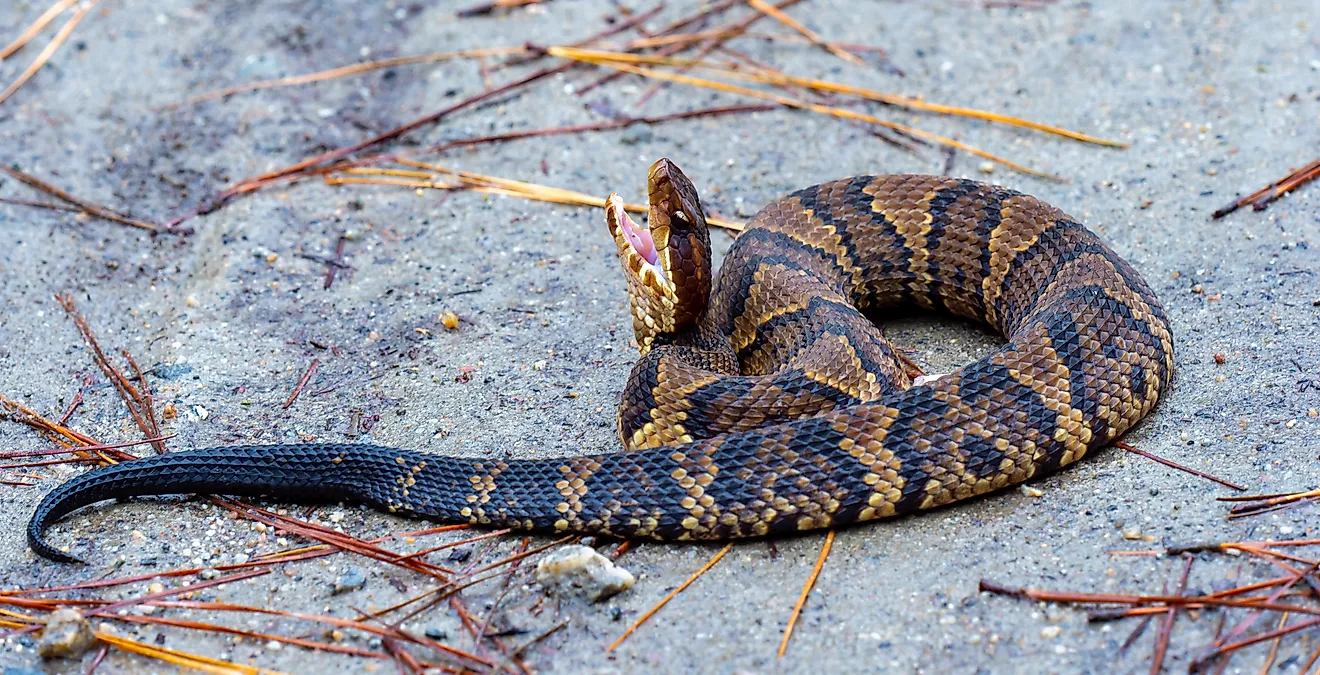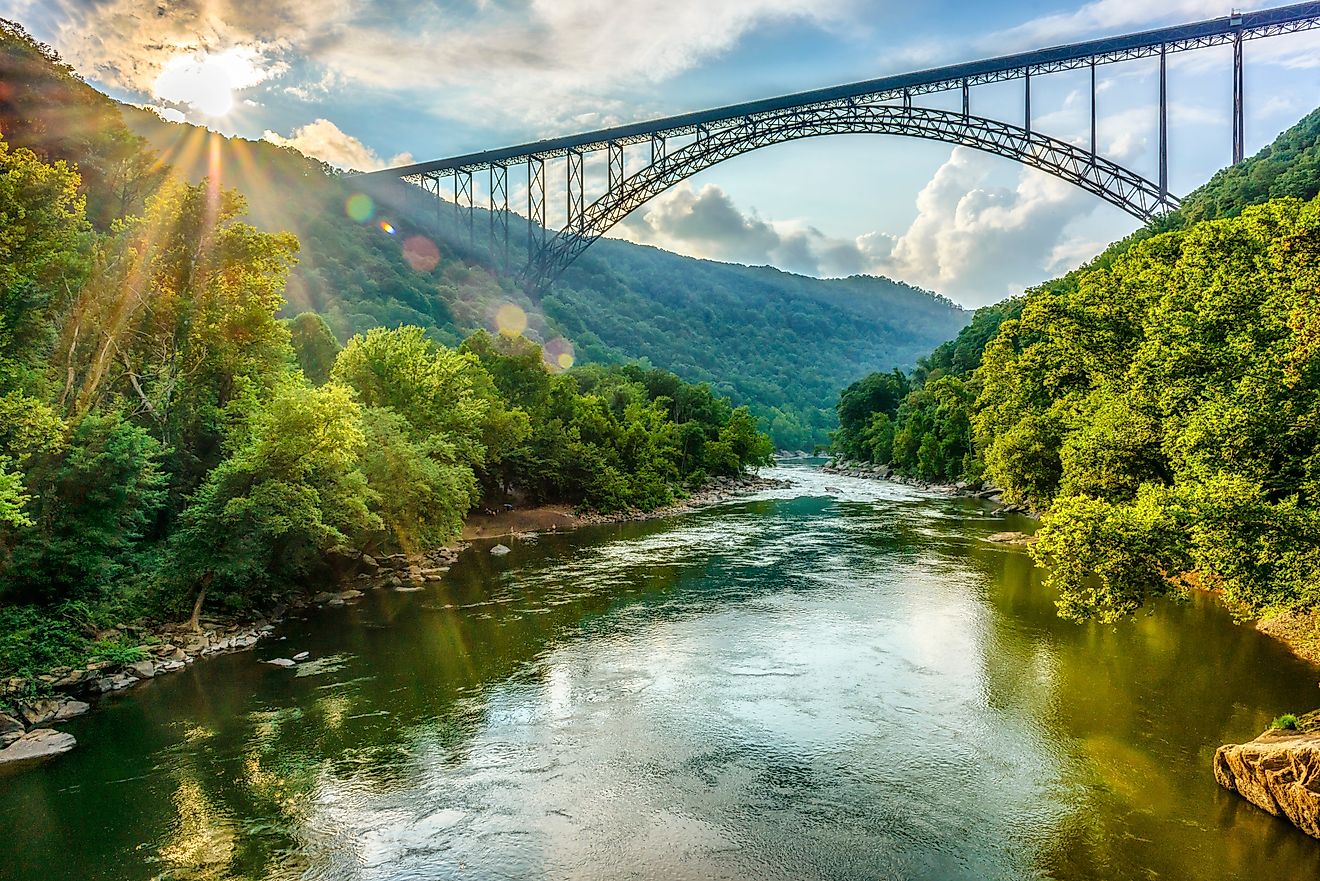
5 Of The Most Snake Infested Rivers In North Carolina
“Crikey, that’s a beautiful snake!” Okay, perhaps that is not the first reaction many people have when seeing a snake. But spotting a snake is a reason for caution, not alarm. North Carolina is home to 37 species of snakes, with only six of these being venomous. Cottonmouths, timber rattlesnakes, Eastern garter snakes, and Eastern kingsnakes are some of the species that call the state home.
Snakes play a critical role in controlling rodent populations and are food for other animals such as hawks, owls, and other snakes. You can find snakes across various terrain in North Carolina, including coastal swamps, mountain areas, and, of course, rivers. Snakes are often drawn to bodies of water because they can find prey and vegetation to take shelter in. Among them, four rivers stand out for their especially high concentration of our slithering friends: the Cape Fear, Neuse, Tar-Pamlico, and lower Roanoke. Whether you’re a kayaker, angler, or nature enthusiast, these waterways offer a fascinating, if slightly nerve-tingling, glimpse into the wild side of the Tarheel State.
Cape Fear River
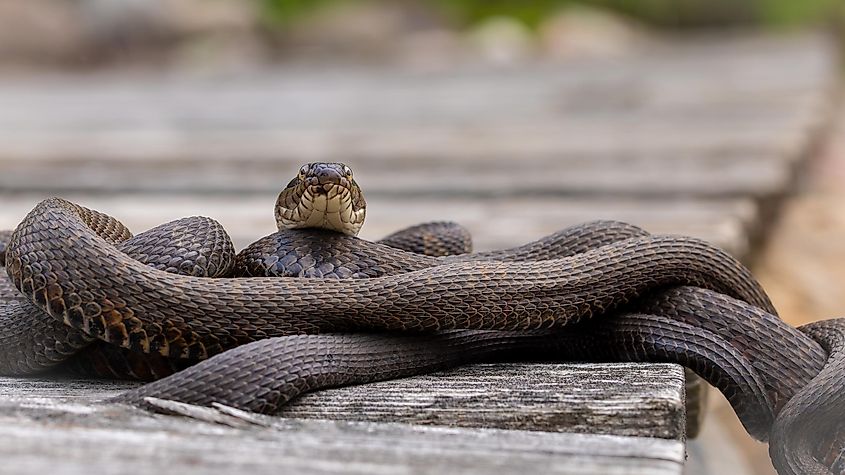
The Cape Fear River, winding 202 miles from the Piedmont to the Atlantic Ocean, is a haven for aquatic and semi-aquatic snakes. Its warm, slow-moving waters and extensive floodplains make perfect hunting grounds for Northern water snakes (Nerodia sipedon), banded water snakes (Nerodia fasciata), and brown water snakes (Nerodia taxispilota). On humid summer days, you might also encounter the occasional cottonmouth (Agkistrodon piscivorus), one of North Carolina’s few venomous water-dwelling snakes. The cypress-lined banks and tangled roots create hiding spots for these predators, which feed on fish, frogs, and small mammals. Birdwatchers and boaters often report seeing serpents basking on fallen logs, perfectly camouflaged against the dark waters that gave the Cape Fear its foreboding name.
Neuse River

Stretching more than 275 miles, the Neuse River flows from the Piedmont’s rolling hills to the Pamlico Sound, providing a lush corridor for wildlife, including a remarkable diversity of snakes. The Neuse is home to plain-bellied watersnakes (Nerodia erythrogaster), queen snakes (Regina septemvittata), and common garter snakes (Thamnophis sirtalis). The river’s oxbows and backwaters are favorite haunts of the cottonmouth, especially in the lower stretches near the towns of Goldsboro and Kinston. During the spring floods, snakes can be seen swimming across the swollen river or gliding through submerged grasses.
Tar-Pamlico River
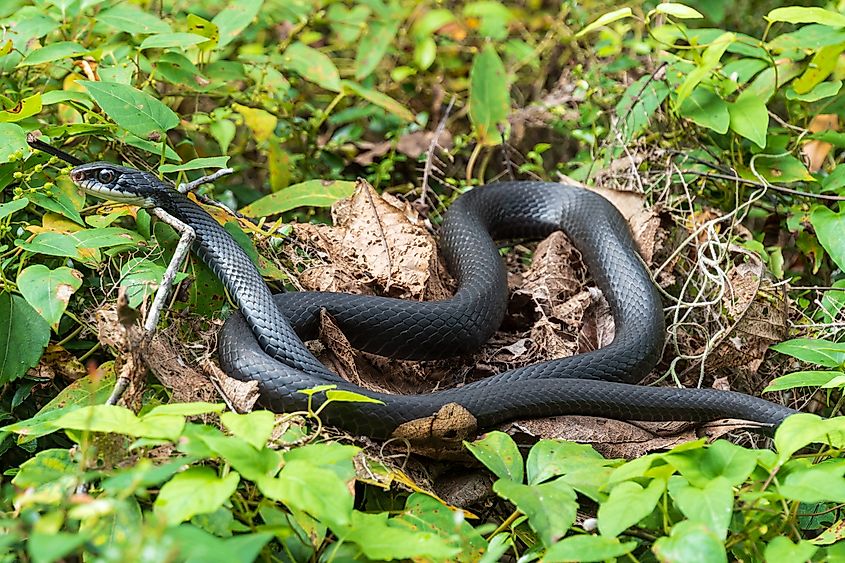
The Tar-Pamlico River system flows eastward from the Piedmont region before widening into the Pamlico estuary, a landscape teeming with reptiles. The banded water snake is especially abundant here, thriving in the blackwater swamps and marshy tributaries. Eastern kingsnakes (Lampropeltis getula) and black racers (Coluber constrictor) also patrol the riverbanks, often seen on sunny days chasing prey or basking on logs. In the lower reaches near Washington, cottonmouths are a frequent sight, particularly around flooded cypress groves and wetland edges. The Tar-Pamlico’s mixture of brackish and freshwater habitats attracts both inland and coastal snake species, creating one of the richest herpetological environments in the state. For wildlife photographers, it’s a dream setting, if you don’t mind sharing space with a few dozen sets of unblinking eyes.
Lower Roanoke River
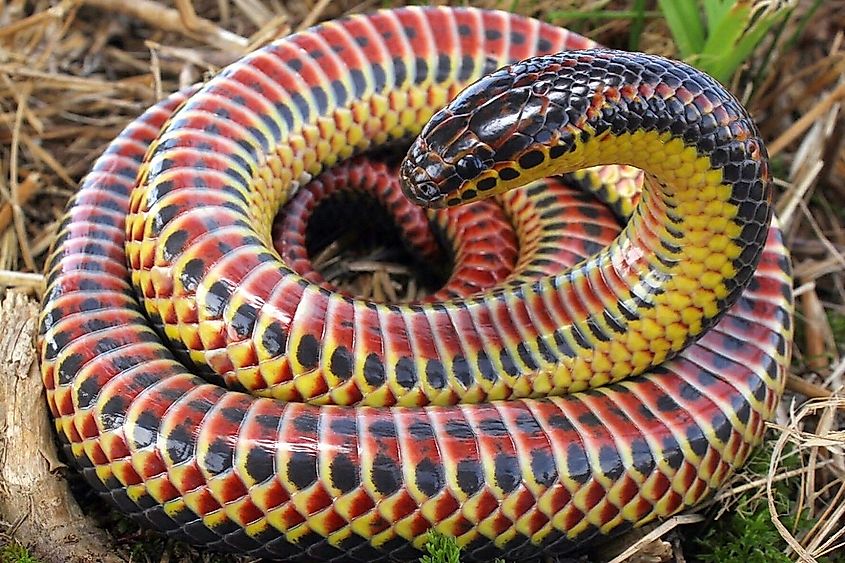
The lower Roanoke River basin, with its expanse of floodplain forests and oxbow lakes, ranks among the most biologically diverse ecosystems in the Southeast, and one of the most snake-heavy. Seasonal flooding brings a surge of life, including northern watersnakes, mud snakes (Farancia abacura), and rainbow snakes (Farancia erytrogramma), both semi-aquatic and rarely seen elsewhere. The dense swamps near Plymouth and Jamesville are prime habitat for cottonmouths, whose populations here are especially healthy. The Roanoke’s remoteness and rich wetlands create ideal conditions for snakes to thrive largely undisturbed. At dusk, as egrets settle into the trees, you might glimpse a sleek body cutting through the still, tannin-dark waters, a reminder that the Roanoke’s beauty comes with a wild, untamed edge.
A Snake Slithers Through It
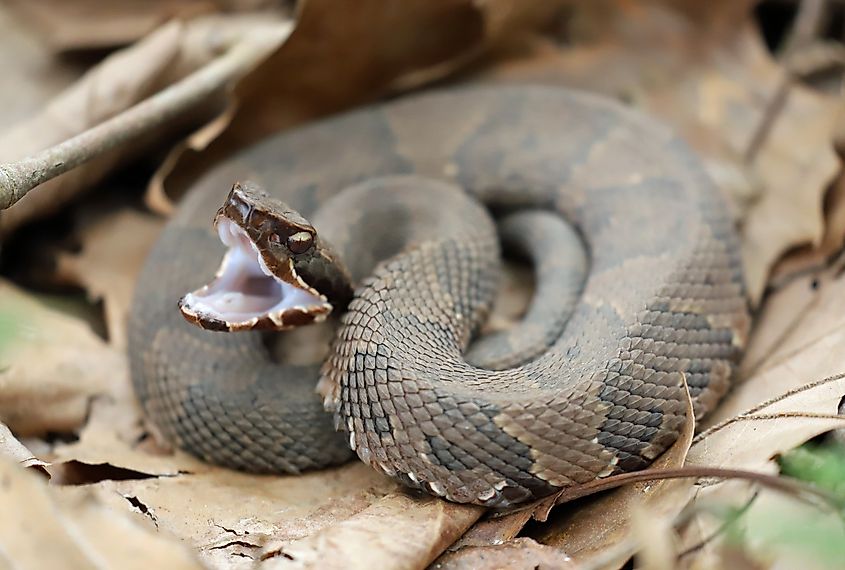
North Carolina's rivers are home to much of the beloved wildlife of the state, from the majestic great blue heron to the playful North American river otter. Snakes are vital threads in the tapestry of North Carolina’s river ecosystems. While these four rivers may hold reputations as “snake-infested,” they are also testaments to the health and complexity of the state’s natural landscapes. Snakes, like any wild creature, should best be appreciated from a safe distance. Observing these reptiles in their native habitats offers not just a thrill, but a chance to appreciate the balance of life that keeps North Carolina’s wild waters truly alive.
